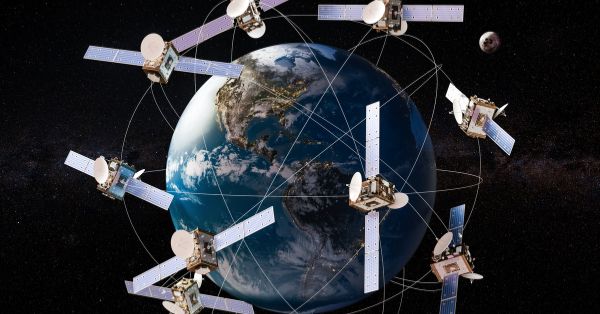OTTAWA, ON and REHOVOT, Israel, Nov. 4, 2024 /PRNewswire/ — Telesat (NASDAQ and TSX: TSAT), one of the world’s largest and most innovative satellite operators, today announced that SatixFy Communications Ltd. (“SatixFy”) (NYSE American: SATX), a leader in next-generation satellite communication systems based on in-house-developed chipsets, will develop and deliver the Landing Station Baseband Units for the upcoming Telesat Lightspeed Network.
Under the terms of a new agreement, SatixFy will design, develop, and supply Landing Station Baseband systems to Telesat, with deliveries taking place over a 28-month period. These systems will enable high-speed and efficient communication between the Telesat Lightspeed Low Earth Orbit (LEO) satellites and the Landing Stations. The Telesat Lightspeed constellation is designed to deliver global, high-speed, low-latency broadband connectivity for enterprise and government organizations. The total agreement amounts to US$39 million, which includes equipment and non-recurring engineering charges, of which US$5 million was paid to SatixFy in a prior financial reporting period.
“SatixFy’s expertise in developing end-to-end next-generation satellite communications systems makes them an invaluable partner as we continue pushing towards the launch of the Telesat Lightspeed Network,” stated Aneesh Dalvi, Vice President for Telesat Lightspeed Systems Development. “Through this agreement, Telesat will be able to fully integrate its innovative LEO satellites with its global terrestrial network to deliver secure, resilient broadband capabilities that meet the mission-critical requirements of telecom, government and enterprise organizations.”
“We value our strong and growing partnership with Telesat as they look to enhance global connectivity by providing faster and more reliable services to their customers,” said Nir Barkan, Chief Executive Officer of SatixFy. “We are proud to be a critical technology supplier for the Telesat Lightspeed program and this agreement further strengthens our position as the leading provider of chipsets and equipment for the satellite communications industry. We look forward to continuing to expand our relationship with Telesat, as well as other leading satellite service providers and operators.”
About Telesat
Backed by a legacy of engineering excellence, reliability and industry-leading customer service, Telesat (NASDAQ and TSX: TSAT) is one of the largest and most innovative global satellite operators. Telesat works collaboratively with its customers to deliver critical connectivity solutions that tackle the world’s most complex communications challenges, providing powerful advantages that improve their operations and drive profitable growth.
Continuously innovating to meet the connectivity demands of the future, Telesat Lightspeed, the company’s state-of-the-art Low Earth Orbit (LEO) satellite network, has been optimized to meet the rigorous requirements of telecom, government, maritime and aeronautical customers. Telesat Lightspeed will redefine global satellite connectivity with ubiquitous, affordable, high-capacity links with fibre-like speeds. For updates on Telesat, follow us on X, LinkedIn, or visit www.telesat.com.
About SatixFy
SatixFy develops end-to-end next-generation satellite space and ground communications systems, including satellite multi beam digital antennas, user terminals and modems, based on powerful chipsets that it develops in house.
SatixFy’s products include modems that feature Software Defined Radio (SDR) and Fully Electronically Steered Multi Beam Antennas (ESMA) that support the advanced communications standard DVB-S2X. SatixFy’s innovative ASICs improve the overall performance of satellite communications systems, reduce the weight and power requirements of terminals and payloads, and save real estate for gateway equipment. SatixFy’s advanced VSATs and multi-beam fully electronically steered antenna arrays are optimized for a variety of mobile applications and services, using LEO, MEO and GEO satellite communications systems, for aero/in-flight connectivity systems, high-end communications-on-the-move applications, and more.
SatixFy is headquartered in Rehovot, Israel with additional offices in the UK, US and Bulgaria. For more information, please refer to www.SatixFy.com.
























